 The Atari Video Computer System, aka Atari VCS (not to be confused with the 2020 modern console of the same name), aka the Atari 2600 is an 8-bit 6502 based game console, released in September of 1977 for around $250.00.
The Atari Video Computer System, aka Atari VCS (not to be confused with the 2020 modern console of the same name), aka the Atari 2600 is an 8-bit 6502 based game console, released in September of 1977 for around $250.00.
While not the first cartridge based console (that belongs to either the Zircon Fairchild Channel F, Bally Astrocade, or technically and really the original Magnavox Odyssey from 1972), it is the game console that made Atari a household name. It also was not the sweeping success a lot of websites make it out to be either. Actually, the Atari 2600 launched with only 9 games in 1977, and was expected to be obsolete in a few years. It was the release of an arcade port, Space Invaders, in 1980, that lead to the Atari VCS finally taking off.
These pages deal more with the various historical aspects about the Atari Hardware, connecting an Atari to a TV, and the various controllers, using these consoles is a lot different from most modern consoles, with maybe the Nintendo Wii/Wii-U being an exception to the norm regarding multiple controllers. I'm also rewriting these pages because in 2023, Atari re-released the VCS/2600 as the "Atari 2600+", and there's more stuff to add about that.
OFFICIAL ATARI VARIANTS
Atari made 7 externally different versions of 2600 Console. These included the 1977-1978 "heavy sixer", the 1978-1981 "light sixer", the 1981-1983 "Woody 4-switch", the 1982-1985 "Vader", the "Short Rainbow" Junior (1987-1989), and the "Long Rainbow" Junior (1989-1990). There was also an Atari 2800 made for the Japanese market that was just a redesigned 2600 - we got this model in the United States as the Sears TeleGames Video Arcade II in 1982, after Atari was selling rebadged/stylized versions of the Heavy/Light Sixer and Woody originals as the original "Sears TeleGames Video Arcade".
| PICTURE(s)
| MODEL + SPECS
| DESCRIPTION/COMMENTS
|


| CX-2600
"Heavy Sixer"
- Rel 10/1977
-Made in Sunnyvale, CA, later examples were built in Taiwan likely of parts shipped from the Sunnyvale Plant
-1.19MHz MOS 6507
-128 Bytes RAM
-2 PCB Design
-RF Only
-9VDC PSU
-STELLA
-TIA
-2x 9pin
-Some don't have channel A/B or 2/3 switch
-All Switches on Front
-Custom Molding in the back
-1/2" Thick ABS Plastic Bottom Shell
-Sears Telegames Version (bottom) has "Burled" walnut Woodgrain and a silver control panel with different wording
Sunnyvales have a six digit serial with a letter afterward, while Taiwanese heavy sixers have a T and a seven digit serial# with leading 0's
The "Heavy Sixer" was built in Sunnyvale California, at the Atari home consumer electronics division plant, beteween late 1977 and early-mid 1978. There are some reports of some late Heavy Sixers from TRW in Taiwan but I have yet to actually see or hear of one outside one or two websites in the last 30 years. The bottom chassis is made of very thick ABS plastic, about 1/2" thick in some spots - very noticeable because the back and front of the console is heavily stylized and looks very nice compared to later versions. There's also a peculiar feature on these early 2600's where playing with one controller connected on a 2-player game like Combat or Air-Sea Battle causes the other player to fire their weapon continuously - possibly an early "1-player" option without adding additional programming? There's a Sears Telegames variant of this console with altered cosmetics: it has a more "burled walnut" style woodgrain, white/silver paint where the printing for the controls is (which is in black, instead of red/yellow/orange), and the painted ring around the controls on the console is chrome instead of orange/yellow. Both are the same machine internally. This was typically sold with a pair of PAddles, 2 CX-10 joysticks (which are different from the CX-40s everyone's familiar with - these had little "discs" on top of the sticks that said "atari" on them), and the 01 Combat cartridge.
HEavy Sixers can vary wildly from run to run externally and internally. I've been slowly decoding these changes....
Seems some of the earliest units had dark green Switchboard PCB's, and odd colored (ie Yellow, Orange, or Blue) Motherboard PCBs. No Channel select switch at all, and no hole for one either (the bottom case was basically a symmetrical design initially).
Later the switchboard became the regular "tan" color, but still featured a 78M05 power regulator transistor sticking out from the board with a large clip-on heatsink. I think this is where we start to see changes being made to the bottom plastic, such as changes to what originally were supposed to be mounts for the internally mounted speakers that were omitted from the final design.
Another change was the cable joining the motherboard and the switchboard. The earliest units used a FFC (Flat Flex Cable), some used a friction-fit connector, some used pins and a pin header (female) on the switch board. Later, they changed to a thicker gray, red, or black ribbon cable, eventually changing to wires in groups of 3 attached to a red female pin connector with the pins soldered to the switch board just a little before or at the production of the Taiwan models. There was at least one late Sunnyvale Heavy Sixer that used the newer style switchboard, albeit with a blue PCB, making this not a uniquely "Taiwan Heavy" feature.
The "Taiwanese" Heavy Sixer is a more consistant build. Basically, they all have bottom plastic with the switch hole one side of the speaker mounts bonded out (and subsequecently used as a strain relief for the RF cable). The switchboard is tan, and the motherboard is a late-revision sunnyvale board still with the ROM Socket but with the cartridge slot screwed in. You'll notice there arent 4 little stickers on the controller ports either. These all shipped with a BLACK power supply, and either CX-40 or CX-10 Joysticks variantly. It seems their production may overlap the Light sixer a little bit as well, with a few remaining Sunnyvale and/or Taiwan units holding in storage as late as 1982 before being sold.
| |
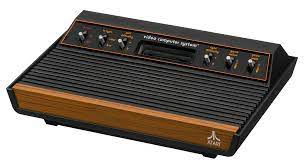

| CX-2600A
"Light Sixer"
- Rel 1978
-Made in Taiwan
-1.79MHz MOS 6507
-128 Bytes RAM
-2 PCB Design
-RF Only
-9VDC PSU
-STELLA
-TIA
-2x 9pin
-All Switches on Front
- Thinner bottom Shell
- No Stylizing around controller/power ports in back
-Sears Telegames Version (bottom) has "Burled" walnut Woodgrain and a silver control panel with different wording
The "Light Sixer" was a redesign of the "Heavy Sixer" to fit into a less as expensive, ABS Plastic, thinner chassis. It houses similar electronics, albeit some of the eliminated features such as the internal game ROM socket and others have been removed from the motherboard, and the controller-board uses regular Film capacitors rather than the old ceramic dipped "Peanut Brittle" ones of the original heavy sixer. Also, the ribbon cable attachment between the motherboard and controller board was placed with a regular pin-through-hole cable going into a SIP pin header on the controller board side. The same color scheme was applied for the Sears version as well - which is the version I currently have. These came with 2 paddles, 2 CX-40 joysticks, and CX-2601 Combat in text label. It's rumored some of these had orange surrounds to the switches rather than orange and I even heard of red being used at least once. These are generally pretty consistant. The one noticeable change is that later models have a different switch bezel with wider openings and flat ovals around the switches instead of the raised ones of the Heavy Sixer and early Light Sixer. Later revision motherboards omit the built-in-ROM socket as well.
The earliest Light Sixers have the same switchplate as the Heavy Sixer consoles, while later units use a newer switchplate with widened switch holes and a flat "grommet" around the switch, as opposed to the raised, pointed one seen on the original Heavy Sixers. My 1980 Sears has the older Heavy Sixer style switchplate, which is telling me that this change was either isolated to specific runs at specific factories (these were made in Hong Kong, Taiwan, and VERY limited quantities at Sunnyvale). My 1980 also has the same motherboard revision as my 1978 Taiwanese Heavy Sixer, complete with ROM Socket, so some have the earlier board variation (REV B I believe).
Light sixers overlap the 4-switch Woody model in sales, and I've even heard reports of some (possibly refurbished) Heavy Sixers trickling out of Atari post-1980. The latest Light Sixer I've heard of was 1982, well into the 4-switch's lifetime.
| |
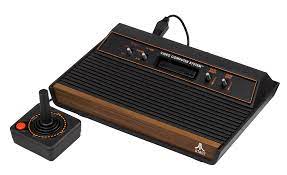

| CX-2600B
"Woody 4-Switch"
- Rel 1980
-Made in Taiwan
-1.79MHz MOS 6507
-128 Bytes RAM
-2 PCB Design
-RF Only
-9VDC PSU
-STELLA
-TIA
-2x 9pin
Power/Color/reset/Select Sw. on Front
- Difficulty A/B, Channel 2/3, cart ports, and power jack located on upper back
- Single PCB Design
-Same bottom and top shell as the Light Sixer
Early "Woodies" have a adhesive blanking plate where the six switch controller ports and power jack would be
-Sears Telegames Version (bottom) has "Burled" walnut Woodgrain and a silver control panel with different wording
These were a cost-reduced design, introduced in late 1980, probably intended to speed up production by reducing assembly steps. Now the motherboard was made in one piece roughly about 13"x6" in size. Metal shielding is put over the spot where the TIA, Stella, and 6507 CPU are located with the tabs twisted or bent to lock the shielding into place. As such, the controller ports, left and right difficulty switches, channel 3/4 switch, and Difficulty A and B switches were relocated on the back of the hump where the front switches are located - with the smaller motherboard located diagonally inside the case.
The Four Switch "Woody" Consoles are almost as wild in variation as the original 1977 SUnnyvales are. They were made by 3 different makers: Dimerco Electronics (Hong Kong), TRW (Taiwan), and Atari COnsumer Electronics Division (Taiwan). Some had parts from the Light Sixer mixed in, such as top covers with the speaker vents AND the 4-switch power/controller port and switch openings, while later ones did not have the "vents", or the bottom part of a Light Sixer with the channel hole, and a thin adhesive blanking plate over where the power and controller jacks would go. THe later models were the same as the "Vader" variants but with a woodgrain front end.
| |
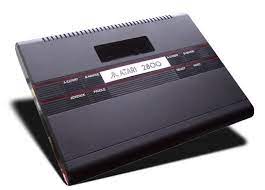
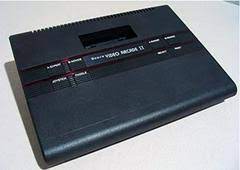
| CX-2800
"Atari 2800"
"Sears TeleGames Video Arcade II"
- Rel 1982
-Made in Taiwan
-1.79MHz MOS 6507
-128 Bytes RAM
-2 PCB Design
-RF Only
-9VDC PSU
-STELLA
-TIA
-2x 9pin
Unique Design
Atari version only in Japan
Sears Version last version of Sears Telegames Video Arcade, and only version of this console released in America
This was a Japanese only release that did appear in the United States under different branding as the Sears TeleGames Video Arcade II. Basically, Atari tried to compete against the Nintendo FAmicom (what later would become the NES in the United States), Sega SG-1000, and others at the time, and so they released it as the 2800 in a sleeker looking case to appeal to the Japanese market. It did not sell very well and was outshined brightly by the Nintendo Famicom. The Sears version did not sell too well either. I'm not familiar with the internals either because of this. These werre the fist silver-box 2600, and came with 2 joysticks and some other pack in IIRC.
| |
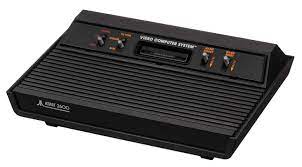
| CX-2600B
"Vader"
- Rel 1986
-Made in Taiwan
-1.79MHz MOS 6507
-128 Bytes RAM
-2 PCB Design
-RF Only
-9VDC PSU
-STELLA
-TIA
-2x 9pin
Sliders for Power/Color sw
Membranes for Select/Reset
RF Cable is now discreet rather than hard-wired inside the system
Dimensions similar to VHS Tape
-No Sears Version
These were a cosmetic upgrade to the above. Basically, instead of Faux Woodgrain, designed to match the late 1970's TV look, the 2600 was revanped for the 80's with a bare black plastic front, and a new logo printed on the front in silver saying "Atari 2600" on the opposite side of where the "Atari" was located on the original units. This was the first model marketed as a 2600, and did not have a Sears TeleGames Variant. Internally, they were much the same as the earlier 4-switchers but had the chips soldered to the motherboard directly (got to save money post-crash on those DIP sockets). These sold in a silver box, 2 joysticks, no paddles, and a copy of Pac-Man.
| |

| CX2600JR
"Short Rainbow">
- Rel 1986
-Made in Taiwan
-1.79MHz MOS 6507
-128 Bytes RAM
-2 PCB Design
-RF Only
-9VDC PSU
-STELLA
-TIA
-2x 9pin
Sliders for Power/Color sw
Membranes for Select/Reset
RF Cable is now discreet rather than hard-wired inside the system
Dimensions similar to VHS Tape
-No Sears Version
The Short Rainbow came out in 1986 and is the older version of the Junior. All 2600 Jr's are otherwise identical, being almost the same size (slightly bigger than) a VHS tape. The cartridge slot is in the middle, flanked by sliders for power and B&W/Color on the left, and 2 membrane push-buttons on t he right for Select and Reset. The Difficulty A/B switches, controller ports, power port, and RF Switch cable connector are in the back of the unit (it does not have a "hard wired" (but not really hard wired) cable like the old ones). The "short rainbow" comes from the fact the aluminum metal strip running across the front of the console hosts a small, gradiated, rainbow-strip with the ATari 2600 branding above it. However, there is an interesting INTERNAL difference, as some 2600 JR's don't use separate chips, but rather, have the entire system integrated into a SINGLE CHIP. This "single chip" 2600 Jr variant is uncommon or rare. Ben Heck experimented and even built a portable around this chip at one point. These came with Combat still, with 2 joysticks, or just the console with one joystick IIRc.
| |

| CX2600JR
"Long Rainbow"
- Rel 1986
-Made in Taiwan
-Rare Later versions consildated all of the below into one chip
-1.79MHz MOS 6507
-128 Bytes RAM
-2 PCB Design
-RF Only
-9VDC PSU
-STELLA
-TIA
-2x 9pin
Sliders for Power/Color sw
Membranes for Select/Reset
RF Cable is now discreet rather than hard-wired inside the system
Dimensions similar to VHS Tape
-No Sears Version
The Long Rainbow version came out a little after the "Short Rainbow" variant and is called such because the rainbow stripe is now printed along the entire length (almost) of the aluminium trim strip across tthe top of the console. There's also a "black" version made in Ireland or Scotland in the late 80's. Electronically, these Atari's are same as either version above, and they were the last variant to be sold before Atari closed their doors in 1990, and all assets eventually went to Hasbro after that.
| |

| CX7800
"Atari 7800 Pro System"
- Rel 1986
Backwards Compatible with all most Atari VCS/2600 Games
The Atari 7800 Pro System was the successor to Atari's failed 5200 Super System released in 1982. The 5200 failed largely due to terrible controllers and a odd power-setup. The 7800 attempted to rectify all that. Unfortunatley for Atari Corp., it was a little too little, and a little too late as Nintendo's Entertainment System had already hit the American Market and had pretty much revived the video game industry post-crash-of-1983. One of the bigger selling points is the backwards compatibility with the Atari 2600 VCS. It was sold along side the aforementioned Junior consoles between 1986 and 1992.
| |

| 2600+
"Atari 2600+"
- Rel 2023
Backwards Compatible with all most Atari VCS/2600 Games & 7800 Games
In 2023, the newly formed Atari (born out of Infogrames, a french gaming company I really like TBH, they made Robot Arena 2), came out with something I Thought Atari should have done in it's previous incarnations since: made a "reissue" version of their older consoles. The 2600+ is about the closest thing. It's basically a Stella Emulator built into a console that can dump the original cartridges and run them as if it were your old VCS like you remember. It uses all the same controls, and runs all the same cartridges. It is a slightly different experience. Some of the benefits of this console is that it uses USB-C for power, HDMI for output, and therefore would be a far more pleasant experience for people who want something modern and plug and play, but with the old feel of playing on an original Atari console. A cool plus also is this will run 7800 games as well. The unit is a 3/4 size version of the "Woody 4-switch" Variant of the 2600, which is arguably the most popular version sold in the early 80's.
| |
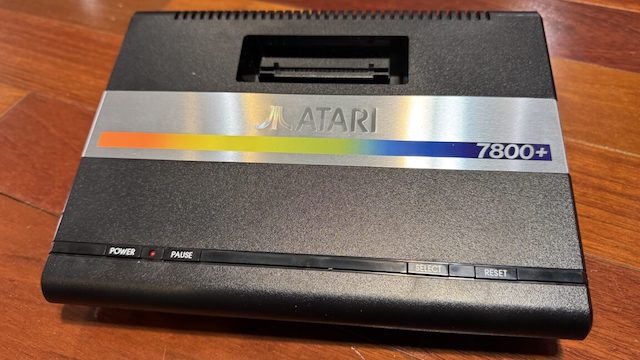
| 7800+
"Atari 7800+"
- Rel 2024
Backwards Compatible with all most Atari VCS/2600 Games & 7800 Games
In 2024, just in time for christmas, Atari released the 7800+, basically just a new version of the 2600+ in a more modern-ish shell (mid 80's vs. late 70's). Truly, it's much the same system as the 2600+, just in a mid-80's motif. So really, pick whichever you like aesthetically, and go with it. I quite well commend Atari on this move, even if at the cost of load-times while it dumps your carts to the system to play them on an emulator. But seriously, did you expect them to start burning new TIA, Stella, and 6507's in 2024? This might be a path for the future to get as close to the original experience without making the product insanely expensive to reproduce ancient 70's chips.
| |
Some posthumous thoughts was that early Atari was very much like a 1950's or 60's guitar manufacturer like Fender or Gibson. They printed out the internal parts, and then put them in bins, and they were assembled out of mish-mashes of these parts. This leads to some interesting variants from all over the world. Another interesting thing is that almolst all Atari units might be "Tuned" slightly differently which will give a different color depth, and a different audio output depending on what you have. They all were set pretty close though it seems - got to remember, the earliest examples only have a year or two to go (2025) before they turn 50 years old, which is a VERY long time for technology, well past a typical technological "lifetime".
Other 2600 Compatible Consoles in the USA
Since Atari did not have a bunch of licensing agreements on hardware, other companies made their own clones of the 2600 over the course of it's lifecycle (and even somewhat well beyond). Also, in more recent years, other companies - including Atari themselves, have made compatible units.
| PICTURE
| SPECS
| DESCRIPTION
|
Coleco Gemini
Columbia Home Arcade

|
| The Coleco Gemini was a Coleco made clone of the Atari VCS/2600 released in 1982, and also sold as a Columbia (CBS) Home Arcade through Columbia House media distribution catalogs at the time. It was a result of a lawsuit from Atari over the adapter Coleco made for their ColecoVision console (shown in another entry below) which allowed the ColecoVision to play 2600 games. It's functionally identical to a full on Atari Product, however, I've had reports of this being a less as reliable unit compared to the actual Atari units (also, my family had one when I was a baby, it lasted even shorter than any other Atari VCS related unit we ever had). Interesting thing about the Gemini, is it came with a pair of special Joysticks with a paddle built into the bottom of them.
|
Mattel Intellivision Atari 2600 Adapter
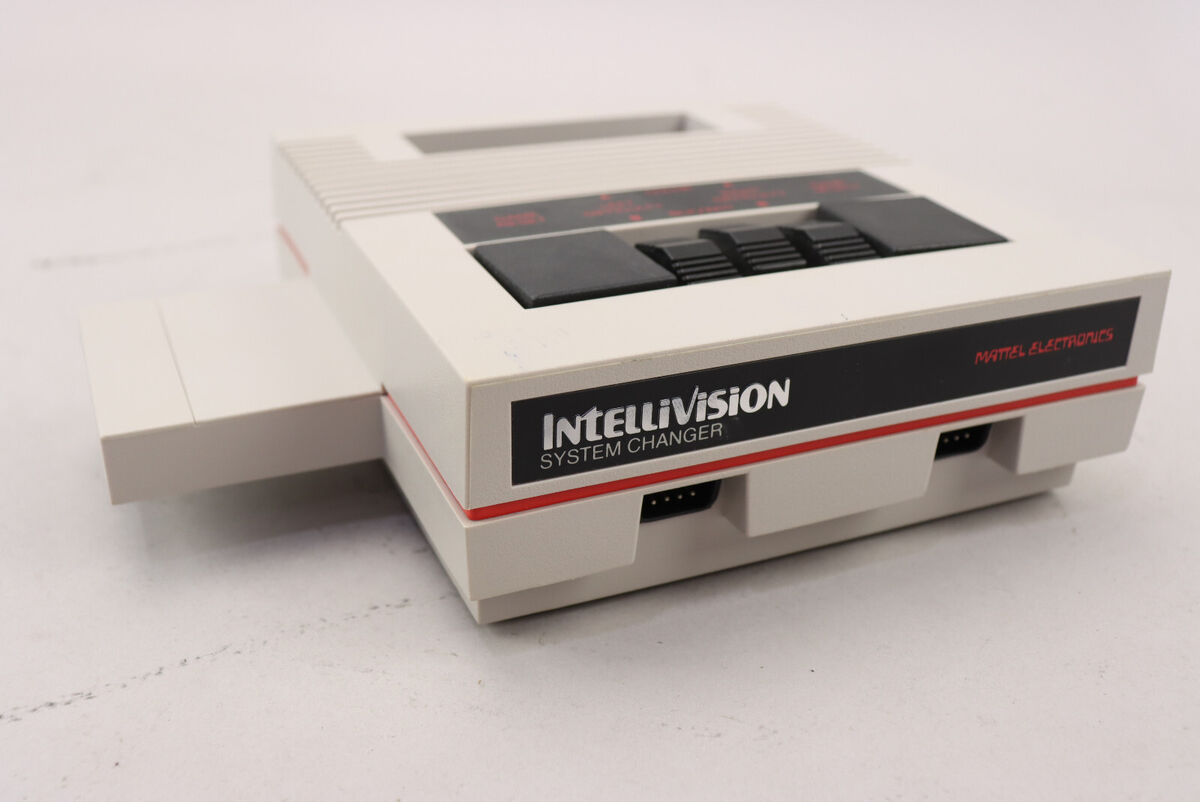
|
| In 1982, When Mattel released their redesigned "intellivision II" Console (I used to own one BTW), they made this adapter that allowed one to play Atari 2600 games on the Intellivison II (the I, IIRC, required modifications to allow it to work). I'm not quite sure as much on the history of this device except that it was another case of a third party making a device to allow another company's games to work on their consoles. I think the idea at the time was to make the 2600 a universal media standard for video games like VHS or DVD became for movies. Actually, the real motivation was to take business away from Atari by allowing the competitions games to work with their own consoles.
|
Colecovision Atari 2600 Adapter

|
| Coleco also made an adapter, which lead to the Gemini unit above, which allowed one to play Atari 2600 games on their Colecovision. This unit, just like the Mattel unit above, really was just a full Atari 2600 clone built into a box that utilized the console as a host for sending a video signal to the TV, and taking power from the main console unit. Atari sued Coleco over this, but they worked out an agreement that allowed Coleco to make their own VCS consoles (the Coleco Gemini).
|
Atari 5200 2600 Adapter
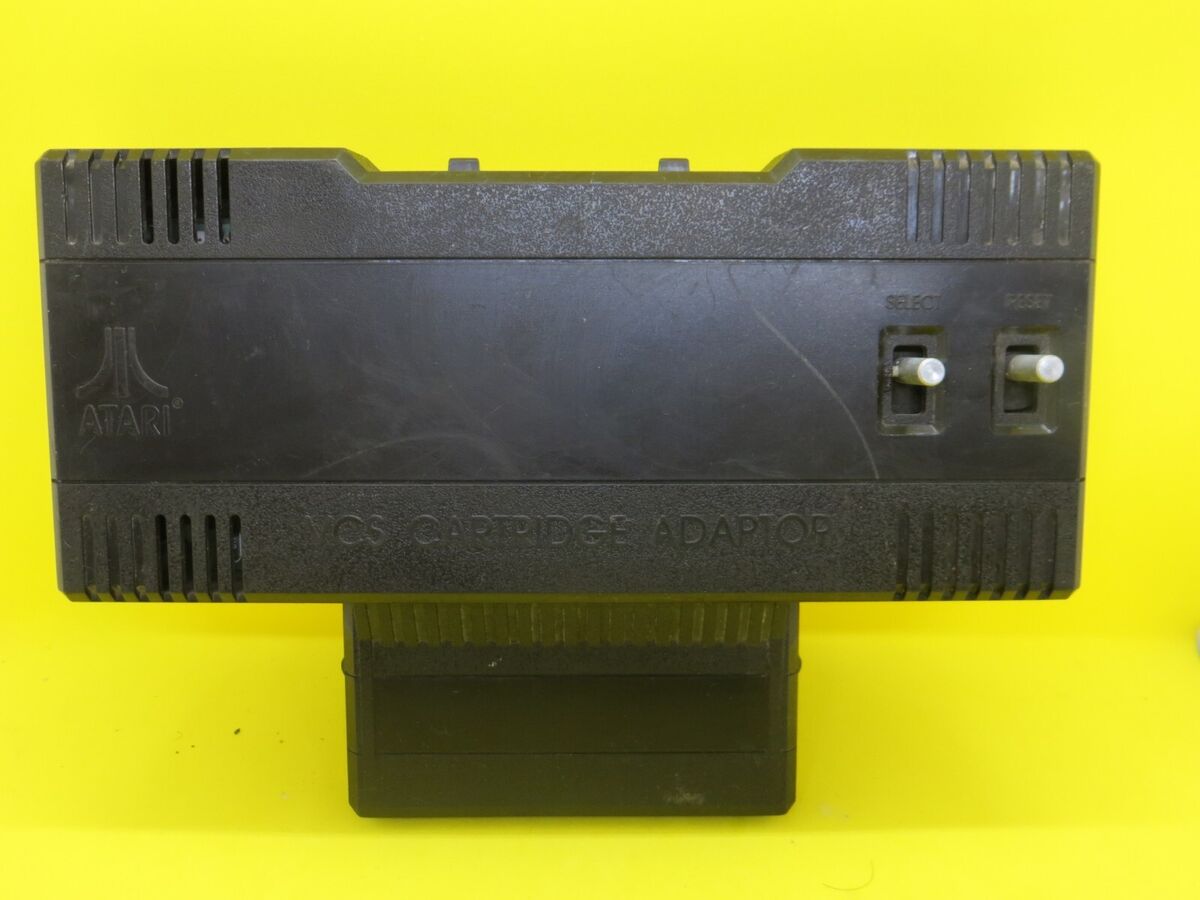
|
| Even Atari made their own adapter for the Atari 5200 Super System, released in 1982. The 5200 was basically a stripped down Atari 8-bit Computer (think 400/800/1200 series) turned into a game console with some modifications to enhance it's functionality AS a game console. As the data-path of the 5200 was not identical enough to the 2600 to enable cartridge-to-cartridge cross-compatibility, they had to design an Adapter - not much unlike Coleco and Mattel above - to allow the VCS games to work in 5200. When Atari released their 7800 Console in 1986, they made sure to have it where both 7800 and 2600 cartridges would fit without an adapter (as well as the main chips of the VCS on-board the 7800 to allow it to properly run AS a 2600 - basiclaly, the 7800 was 2 consoles in one).
|
Hyperkin Retron 77'

|
| In the 2000's, with an aging populace of Atari VCS/2600 units in the world (and Atari defunct), the legacy retro-games company Hyperkin decided to come up with their own version of the Atari VCS called the "Retron 77'". The Retron 77' is a miniscule emulation console designed to play actual Atari 2600 games, with some henhanced features and a smaller footprint (FAR smaller, about 1/2 the size of a 2600 Junior), and utilized some new recreations of the original joystics as well as the "Ranger" gamepads with a paddle built in. It doesn't work with certain games (such as the new ARM co-processor enhanced games like those batari BASIC Games using the DPC+ Kernel) as it doesn't actually run the cartridges directly, but rather is a "ROM dumper" - it dumps the ROM to a memory chip on the board, and then runs the ROM FROM that chip.
|
Atari Flashback 2 (With Atari Cartridge Mod/Hack)
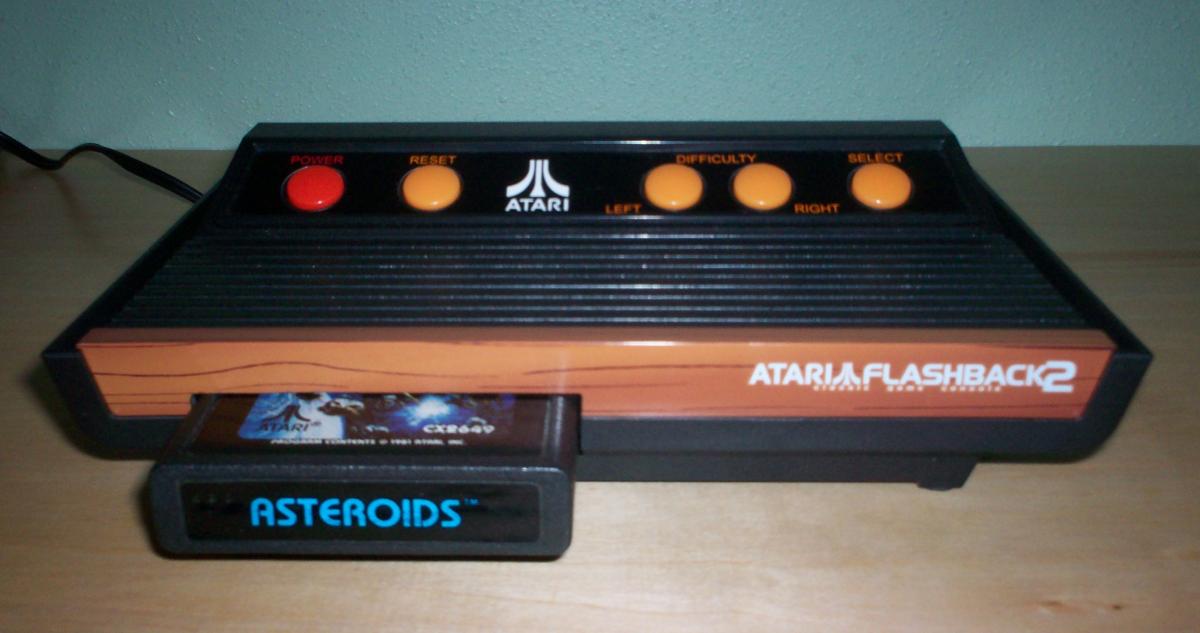
|
| Another interesting attempt at bringing the VCS back was Atari's own Flashback series of consoles. The Flashback 2, which came out around 2002-2003, was actually fan-assisted in it's design, in that the company that made it took a suggestion to offer some DIYer solder-points inside the case so you could attach your own Atari 2600 cartridge slot, and play actual 2600 games on the console. This was a feature that's unique only to the Flashback 2, and was not offered on any other version of the Atari Flashback of which I'm aware of. You might even encounter some already modded examples in the wild.
|
Various Foreign Clones

|
| Outside of the United States (places like Africa, India, and South America to name a few), other companies, not unlike the NES and it's various clones worldwide like the Dendy of the USSR, or the various Famiclones from China, the Atari VCS had it's own ranging from generic "TV Game xxx-in-1" variants with mutliple 2600 games built into the unit, all the way to things like this Dactar "Dactari" here that allowed one to have your 2600 as a carrying-case-type affair. Some looked like actual consoles, while others were their own design or just mildly derivative of Atari's orgiinal design. These are kind of rare, and weird, but they can be kind of interesting to check out and look at.
|
|


 The Atari Video Computer System, aka Atari VCS (not to be confused with the 2020 modern console of the same name), aka the Atari 2600 is an 8-bit 6502 based game console, released in September of 1977 for around $250.00.
The Atari Video Computer System, aka Atari VCS (not to be confused with the 2020 modern console of the same name), aka the Atari 2600 is an 8-bit 6502 based game console, released in September of 1977 for around $250.00.